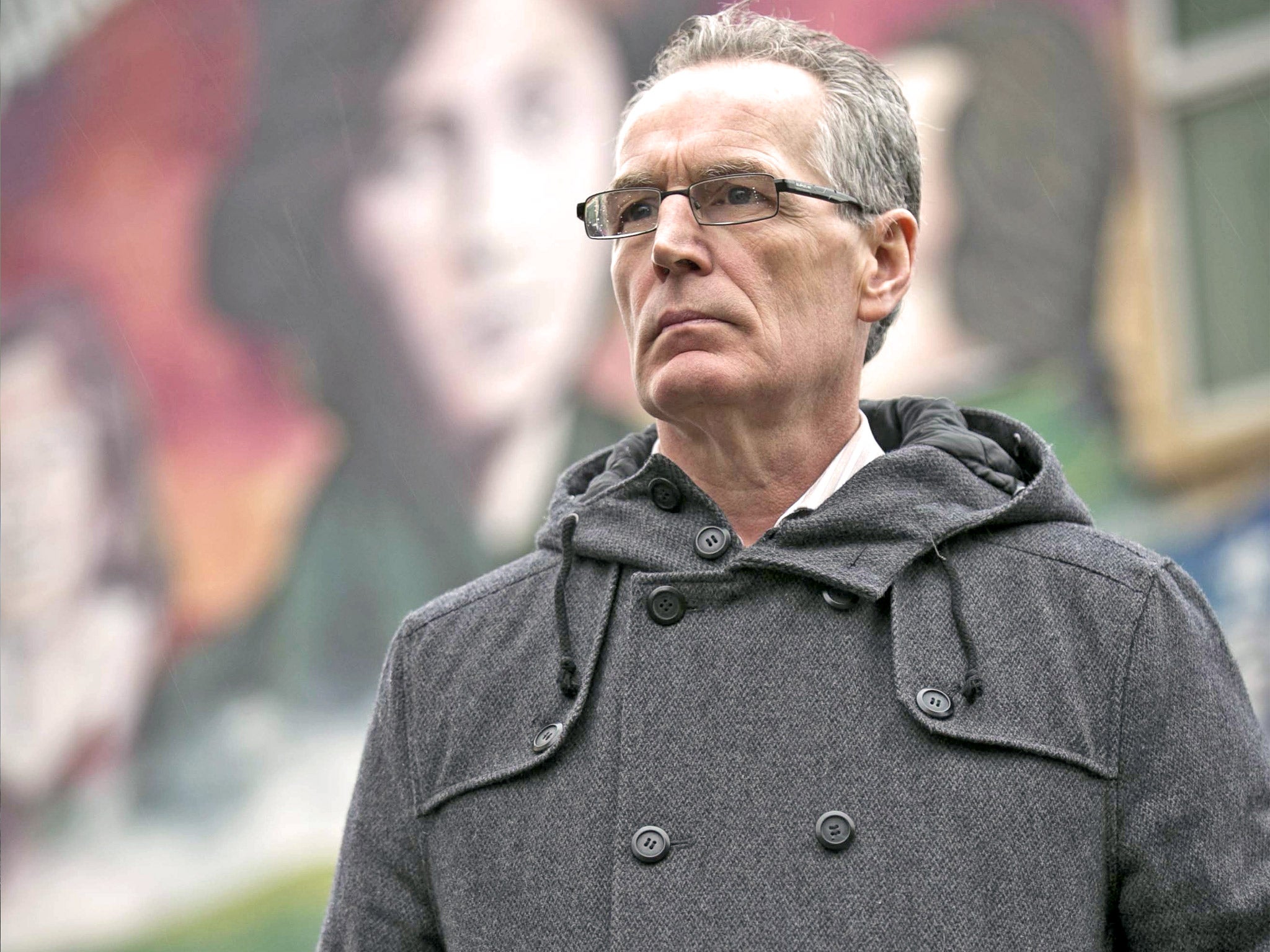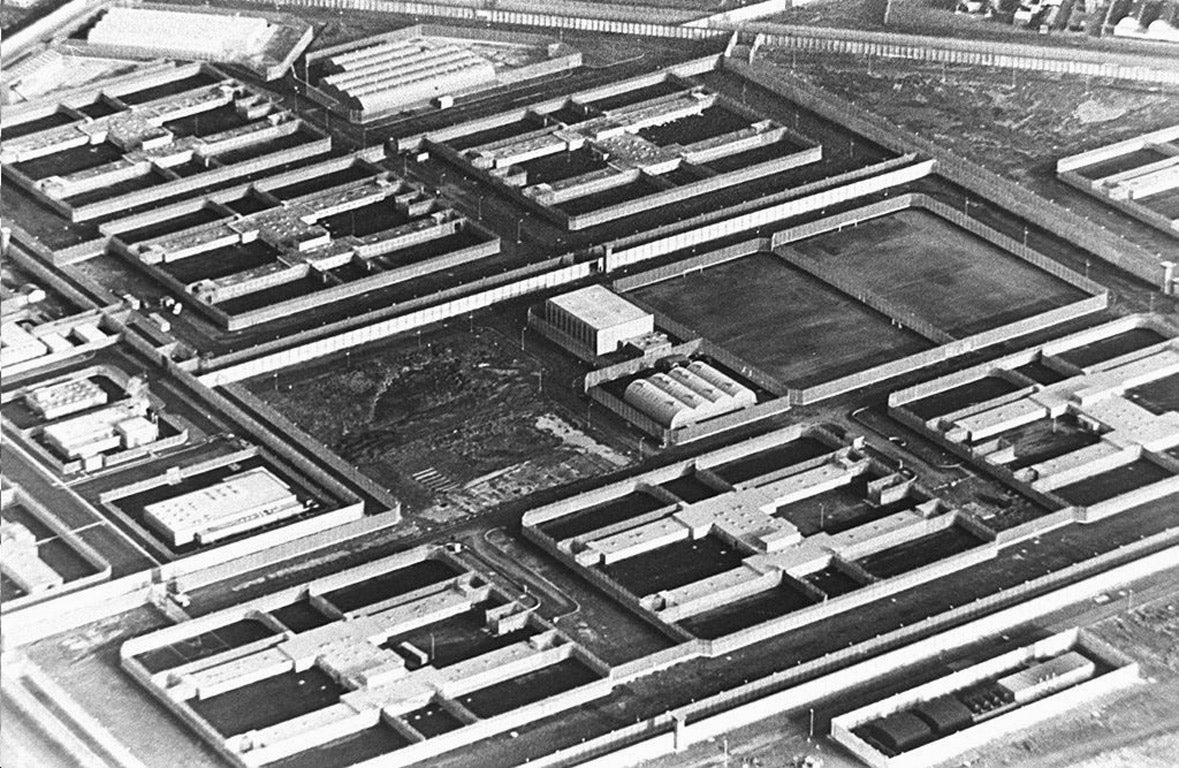Gerry Kelly speaks: ‘I looked at him and said: “Don’t move or I’ll shoot.” That’s all I’ll say...’
IRA terrorist turned Sinn Fein minister Gerry Kelly has threatened to reopen old wounds by revealing how he led the spectacular Maze jailbreak in 1983. He tells David McKittrick why he wrote his book, and why doesn’t regret blowing up the Old Bailey

Your support helps us to tell the story
From reproductive rights to climate change to Big Tech, The Independent is on the ground when the story is developing. Whether it's investigating the financials of Elon Musk's pro-Trump PAC or producing our latest documentary, 'The A Word', which shines a light on the American women fighting for reproductive rights, we know how important it is to parse out the facts from the messaging.
At such a critical moment in US history, we need reporters on the ground. Your donation allows us to keep sending journalists to speak to both sides of the story.
The Independent is trusted by Americans across the entire political spectrum. And unlike many other quality news outlets, we choose not to lock Americans out of our reporting and analysis with paywalls. We believe quality journalism should be available to everyone, paid for by those who can afford it.
Your support makes all the difference.He is now one Northern Ireland’s most prominent politicians – a member of the Stormont Assembly and a Sinn Fein spokesman on policing. But Gerry Kelly has been accused of reopening the province’s old wounds by revealing fresh details of his role in the shooting of a prison officer during a mass escape that he led from the Maze prison in 1983.
In a new book Kelly tells how, as an IRA prisoner, he threatened the prison guard with a gun: “Looking over the sights of the weapon straight at his face.”
He writes that he “very deliberately, very sharply” warned the officer: “Do not move or I will shoot you.” Minutes later two bullets were fired, one of them hitting the officer in the head.
Does Kelly acknowledge he fired at the guard? “There were two shots fired,” he told The Independent. “There was myself and others there, so clearly it was a prisoner who shot him. But that is as far as I will go.”
The official report into the incident goes much further, naming him as the shooter. It relates how the officer attempted to set off an alarm “but before he could do so Kelly fired two shots at him. He collapsed on the floor with a bullet through the head”.
The warder survived, though another officer died after being stabbed with a chisel.
That was 30 years ago when Kelly was one of the IRA’s most formidable operators. Among his activities was blowing up the Old Bailey with car bombs in 1973 which injured more than 200 people and led to a caretaker dying of a heart attack.
He is now a member of the Northern Ireland Policing Board. In fact, as a government minister at Stormont, he once had official responsibility for the oversight and management of the now derelict Maze prison site.
His new book The Escape tells in unprecedented detail how he and other IRA inmates staged the mass escape from the Maze one year after 10 prisoners, including Bobby Sands, died on hunger strike in the jail. 38 men, half a dozen of them brandishing smuggled guns, fled from the maximum security facility which the government described as holding “the largest concentration of terrorists in western Europe”.
Prime Minister Margaret Thatcher described the break-out “the gravest in our prison history”.
But, at a time when Northern Ireland is becoming more peaceful, does Kelly’s book glorify violence? “Absolutely and entirely not,” he insists. “Part of this was to put the inside story on record, which I believe republicans must do.
“I am committed to the peace process and moving forward – I believe in conflict resolution, I believe in all of that. But neither am I going to hide from history, because I do not think we should.
“Some unionists have a certain image of me because I do think that the struggle has to be defended. But I don’t want people to relive history.”
Among those who accept his political bona fides are republican splinter groups who are still involved in occasional bombings and who more than once have threatened his life. “I’m the first person out condemning these so-called dissidents,” he says. “They think I’m the worst quisling.”
What did he and the IRA hope to achieve with the Old Bailey bombing? “I was 19, I was a civil servant,” he recalls. “I don’t claim I was intensely politically aware, but I was aware of what the British Army was doing on our streets.
“And we said, ‘We’re not taking any more of this.’ The intent was to bring the message home to the door of the British.”
Sentenced to life imprisonment in Britain, he and others staged a hunger strike demanding to be transferred to prison in Belfast. Refusing food, he was force-fed 160 times – “pretty horrific stuff,” he says, matter of factly.

In the 15 years he spent behind bars he read Karl Marx and Adam Smith – “though I’m not a Marxist or a capitalist” – as well as Frantz Fanon and Marilyn French.
He cites as particularly influential the book Woman on the Edge of Time, by the poet and novelist Marge Piercy, which he says gave him a different view on feminism and inequality. “That raised my awareness in a male macho time,” he says. “Where’s more male and macho than jail?”
As a teenage IRA volunteer did he think he would ever reach his present age of 60? “To be honest, no,” he says. “In the throes of the struggle, when things were very intense, I thought at that stage that it was either jail or death. I’d a couple of fairly close calls, nearly got shot a couple of times. A soldier fired a shot which hit a wall about two inches from my head, and chips of the wall hit me.”
By the 1990s he had become a key IRA negotiator, holding secret talks with representatives of British intelligence. “They said things like, ‘A united Ireland is inevitable, it’s only a matter of time; we want to find a way out of conflict’,” he recalls.
“Of course we expected them to say things like that.”
When the talks moved into the public sphere Kelly developed a reputation for being uncommunicative at meetings with the Government, and for saying nothing to the media. This led to the theory that he was at the table to reassure hardline elements that Sinn Fein politicos were not selling them out.
He shakes his head, saying, “I recognise that was said, but I don’t accept it. In a negotiating team you need people who represent a wide range of views – especially within republicanism, so as not to leave people behind.
“My job was to make sure that all the points we wanted were covered – I was like a sweeper. Martin McGuinness was absolutely in charge – I would pass notes to him as reminders.”
He takes great pride in the Maze break-out, describing the escape was “a very proud moment” for him.
He and the IRA are not however proud of another incident, the 20th anniversary of which has just been reached. In 1993, the IRA sent two members into a busy shop on Belfast’s Shankill Road with a bomb which they said was meant for loyalist extremists.
When the device went off prematurely it killed nine Protestants, including two children and four women, together with one of the bombers. The attack was commemorated by some republicans last week but Kelly makes no attempt to defend it. “It was wrong, it was a terrible thing that happened – I am truly sorry for the loss of life” he says.
“Nine innocent people were killed. I can sit and try and explain this to you all day, but there is no explanation for it. I’m not here to excuse it. The Shankill bomb was wrong, full stop.”
Asked if he has other regrets he answers: “If you’re saying, ‘Are there any regrets about incidents?’ then of course there are. If you’re involved in conflict and in a military struggle, then the danger is of course that the regrets are more serious.
“I’ve tried to do what I did with integrity. People might baulk at that, but I think I’ve come through life with some integrity. You might think everything the IRA did was wrong but I don’t.
“If you’re asking if I have regrets in a general sense, ‘Do I regret having been in the IRA, do I regret my life?’ then I have to answer ‘No’.”
The ‘great’ escape: Propaganda coup for the IRA?
The mass IRA escape from the Maze prison in 1983 was regarded as one of the most catastrophic security failures of the Northern Ireland troubles.
Some 38 IRA members broke out of what was supposed to be the most secure prison in Europe, which had been designed to house paramilitary prisoners and was set beside an army camp. Two years earlier, the IRA had received a setback when 10 republicans died on hunger strike at the prison.
The escape provided a huge propaganda success and morale boost for the IRA. It also set free some of the IRA’s most dangerous members, 28 of whom had been convicted of murder or associated offences.
Many of the escapees were quickly rounded up, while others were shot dead in encounters with the army and SAS in later months.
Prison staff had been lulled into a false sense of security when Gerry Kelly and other senior IRA personnel had pretended to settle down and cooperate with staff. An official report said some staff had become lazy and complacent.
In the escape, IRA members took over part of the prison, loading almost 40 inmates into a kitchen lorry. Kelly, wearing a prison officer’s uniform, trained a gun on the driver as the lorry was driven to the main gate. During the incident, five prison officers were stabbed and two were shot.
Join our commenting forum
Join thought-provoking conversations, follow other Independent readers and see their replies
Comments